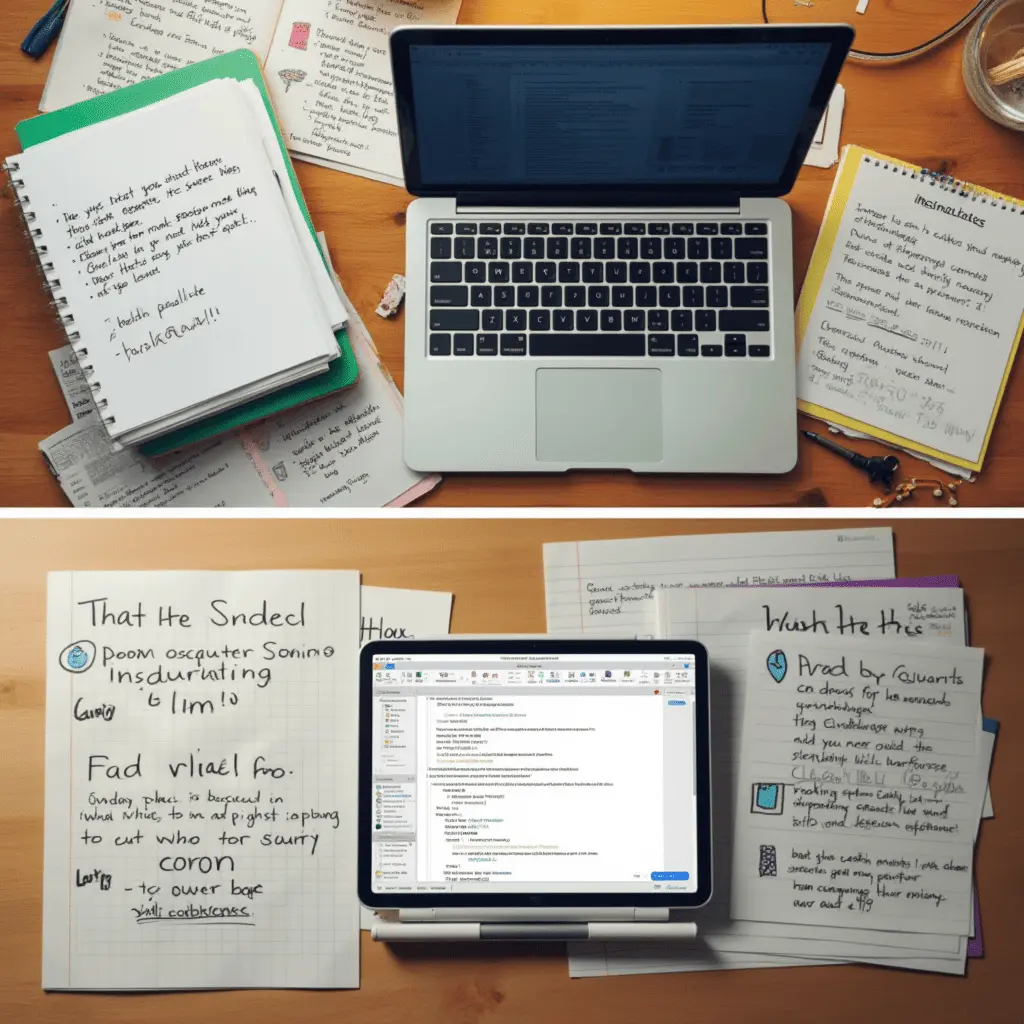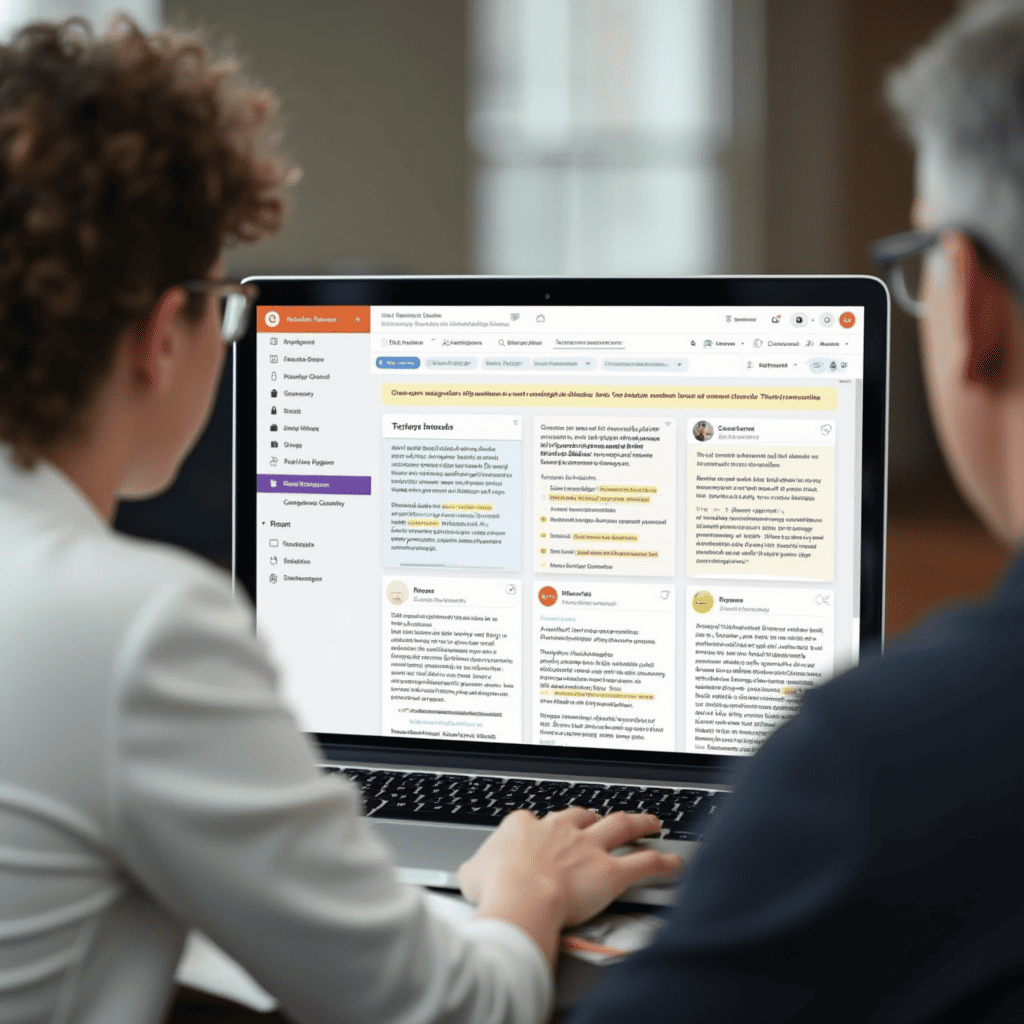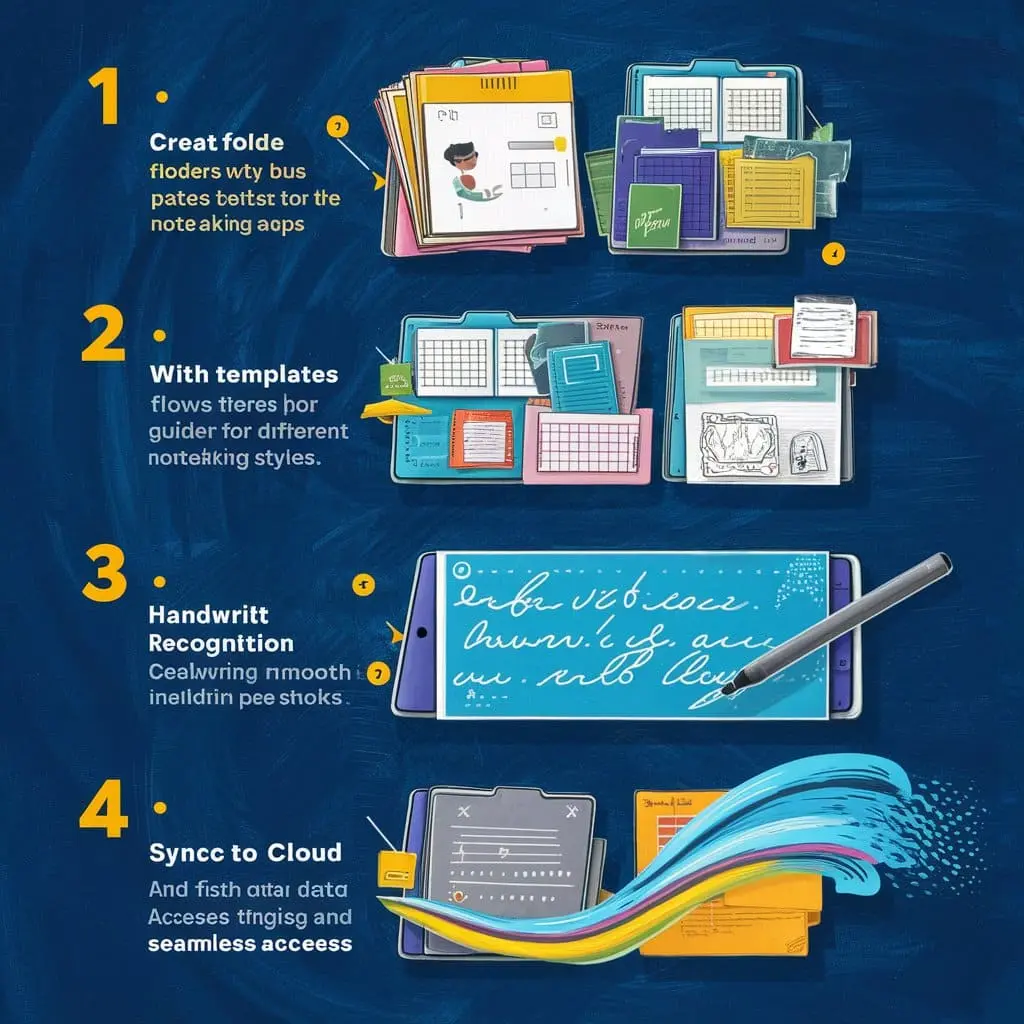How GoodNotes Professor for Academic Research Transforms Your Workflow
Are you a professor drowning in stacks of handwritten notes, endless PDFs, and the chaos of juggling multiple research projects? You’re not alone. Academic research is a demanding endeavor, often leaving little time for actual discovery as you struggle to stay organized. Enter GoodNotes professor for academic research—a game-changing digital tool designed to streamline your workflow, boost productivity, and bring order to the chaos.
Imagine having all your research materials—annotated PDFs, handwritten notes, and lecture slides—in one place, accessible anytime, anywhere. No more flipping through physical notebooks or losing critical insights in a sea of paper. With GoodNotes, you can annotate, organize, and collaborate like never before.
In this guide, we’ll explore how GoodNotes professor for academic research can revolutionize your workflow, saving you time and helping you focus on what truly matters: groundbreaking research and inspiring your students.
Table of Contents
What is GoodNotes and Why Should Professors Use It?

GoodNotes is a digital note-taking app that allows you to create, organize, and annotate notes seamlessly. Available on iOS and macOS, it’s a versatile tool tailored for academics. But why should professors specifically consider using it?
Here’s why:
- Streamlined Workflows: Say goodbye to scattered notes and endless paper piles.
- Enhanced Organization: Keep all your research materials in one place.
- Improved Collaboration: Share notes and annotations with colleagues effortlessly.
Traditional Note-Taking vs. GoodNotes
| Aspect | Traditional Note-Taking | GoodNotes |
|---|---|---|
| Organization | Physical notebooks, prone to loss | Digital, searchable, cloud-backed |
| Accessibility | Limited to physical location | Accessible anywhere, anytime |
| Collaboration | Difficult to share | Easy sharing and annotation |
GoodNotes isn’t just a tool—it’s a game-changer for academic research.
Key Features of GoodNotes for Academic Research
GoodNotes is packed with features designed to make your research process smoother and more efficient. Here’s a breakdown of the most impactful ones:
1. PDF Annotation and Markup
One of the standout features of GoodNotes is its ability to annotate PDFs. You can:
- Highlight key sections: Use different colors to categorize information (e.g., yellow for key findings, green for methodology).
- Add comments and notes in the margins: Jot down thoughts, questions, or references directly on the document.
- Draw diagrams or sketches directly on the document: Perfect for visualizing data or illustrating concepts.
This feature is perfect for reviewing research papers, marking up lecture slides, or annotating grant proposals. For example, a biology professor can highlight key findings in a research paper, add notes about potential experiments, and sketch out a diagram to explain a complex process.
2. Handwriting Recognition and Search
Ever struggled to find a specific note in a sea of handwritten pages? GoodNotes solves this with its handwriting recognition feature. Simply write your notes by hand, and the app will convert them into searchable text.
For example, if you’re looking for a specific term or concept, just type it into the search bar, and GoodNotes will locate it instantly. This is particularly useful for professors who prefer handwriting but still want the benefits of digital searchability.
3. Customizable Notebooks and Templates
GoodNotes allows you to create customizable notebooks for different projects. Whether you’re working on a research paper, preparing a lecture, or organizing lab notes, you can tailor your notebooks to suit your needs.
The app also offers a variety of templates, including:
- Cornell note-taking systems: Ideal for organizing lecture notes and research summaries.
- Grids and graphs for data visualization: Perfect for plotting experimental results or creating charts.
- Blank pages for freeform brainstorming: Great for sketching out ideas or mind-mapping.
For instance, a history professor can use the Cornell template to organize lecture notes, while a physics professor might use grid paper to plot experimental data.
4. Cloud Syncing and Backup
Losing research notes is every professor’s nightmare. With GoodNotes, your data is securely backed up to the cloud, ensuring it’s always accessible—even if you lose your device.
You can also sync your notes across multiple devices, so you can start working on your iPad and pick up right where you left off on your Mac. This seamless integration is a lifesaver for busy academics who are constantly on the go.
How GoodNotes Enhances Academic Research Workflows

Now that you know the features, let’s dive into how GoodNotes can transform your academic research workflow.
1. Organizing Research Materials
GoodNotes makes it easy to keep your research materials organized. Here’s how:
- Create folders for different projects: For example, you can have separate folders for each research paper, lecture series, or grant proposal.
- Use tags to categorize notes by topic or theme: Tags like “Methodology,” “Literature Review,” or “Data Analysis” can help you quickly locate relevant notes.
- Store all your materials—PDFs, handwritten notes, and images—in one place: No more flipping through multiple notebooks or searching through endless files on your computer.
For example, a psychology professor can create a folder for a specific study, tag notes by participant group, and store all related materials in one place.
2. Annotating and Summarizing Research Papers
Reading and annotating research papers is a core part of academic work. With GoodNotes, you can:
- Import PDFs directly into the app: No need to print out papers or switch between multiple apps.
- Highlight key findings and add comments: Use different colors to highlight different types of information (e.g., yellow for key findings, blue for methodology).
- Summarize sections in your own words for better retention: Write summaries directly on the document or in a separate notebook.
For instance, a literature professor can import a PDF of a critical essay, highlight key arguments, and add notes about how they relate to their own research.
3. Collaborating with Peers and Students
Collaboration is key in academia, and GoodNotes makes it easier than ever. You can:
- Share notebooks with colleagues for feedback: For example, you can share a notebook containing draft research findings with a co-author.
- Use shared notebooks for group projects or co-authored papers: Multiple users can annotate and edit the same document in real-time.
- Annotate shared documents in real-time: This is particularly useful for collaborative research or peer review.
For example, a team of researchers working on a joint publication can use a shared notebook to compile their findings, annotate each other’s work, and finalize the manuscript.
4. Streamlining Lecture Preparation
Preparing lectures can be time-consuming, but GoodNotes can help. You can:
- Create lecture notes and presentations within the app: Use templates to structure your content effectively.
- Integrate multimedia elements like images and diagrams: For example, you can insert diagrams to explain complex concepts or add images to illustrate key points.
- Use templates to structure your content effectively: Templates like the Cornell system can help you organize your lecture notes in a clear and logical manner.
For instance, a chemistry professor can create a lecture notebook with slides, diagrams, and notes, all in one place.
Real-Life Examples: Professors Using GoodNotes
Still not convinced? Here are some real-life examples of how professors are using GoodNotes to enhance their research:
Dr. Emily Carter, Biology Professor
“GoodNotes has completely transformed how I organize my lab notes. I can easily search for specific experiments and share my findings with my team. The ability to annotate PDFs and sketch diagrams directly on the document has been a game-changer for my research.”
Dr. James Lee, History Professor
“I use GoodNotes to annotate historical documents and create lecture notes. It’s made my research process so much more efficient. The handwriting recognition feature is particularly useful for quickly finding notes I’ve taken during archival research.”
Dr. Sarah Johnson, Physics Professor
“GoodNotes has streamlined my lecture preparation. I can create detailed notes, integrate diagrams, and even record audio explanations—all in one place. It’s made my lectures more engaging and easier to prepare.”
Tips for Getting Started with GoodNotes

Ready to give GoodNotes a try? Here are some tips to help you get started:
- Set Up Your Workspace: Create folders and notebooks for each project.
- Explore Templates: Use academic templates for lab notes, lecture summaries, and more.
- Learn Shortcuts: Master features like handwriting recognition and search to save time.
- Sync and Backup Regularly: Ensure your data is safe and accessible.
Transform Your Academic Research with GoodNotes
GoodNotes is more than just a note-taking app—it’s a powerful tool that can revolutionize your academic research workflow. From organizing your materials to collaborating with peers, it’s designed to make your life easier.
So, what are you waiting for? Download GoodNotes today and experience the difference it can make in your research.
FAQ Section
1. What is GoodNotes, and how can it help professors?
GoodNotes is a digital note-taking app that helps professors organize research, annotate PDFs, and collaborate with peers. It’s designed to streamline academic workflows.
2. Can I use GoodNotes for annotating research papers?
Yes, GoodNotes allows you to import and annotate PDFs, making it ideal for academic research.
3. Is GoodNotes suitable for collaborative research?
Absolutely! You can share notebooks and annotations with colleagues or students for seamless collaboration.
4. How does GoodNotes compare to other note-taking apps?
GoodNotes stands out for its handwriting recognition, PDF annotation, and customizable templates, making it a top choice for academics.
5.How to make Goodnotes for studying?
Create well-organized notebooks for different subjects.
Use templates for planners, lecture notes, or to-do lists.
Take advantage of features like the lasso tool, text recognition, and color-coded annotations for better note-taking.
Incorporate multimedia such as images, PDFs, and hyperlinks to make your notes more interactive.
6.Is Goodnotes free for teachers?
Goodnotes often offers free licenses or special discounts for educators through educational programs. You can check their official website for eligibility details.
7.Is there a student discount for Goodnotes?
Yes, Goodnotes usually provides student discounts. Students need to verify their educational status to access these offers.
What are Goodnotes used for?
Goodnotes is primarily used for digital note-taking, planning, and annotating PDFs. It’s popular among students, teachers, and professionals for creating structured and interactive documents.
8.The server is busy. Please try again later.
This message suggests that the Goodnotes server is experiencing high traffic. Try again after some time or check their status page for updates.
By following this guide, you’ll not only improve your research workflow but also save time and boost productivity. Start your GoodNotes journey today and take your academic research to the next level!

